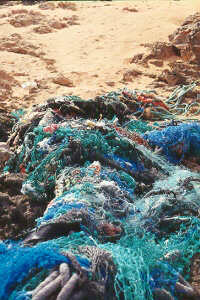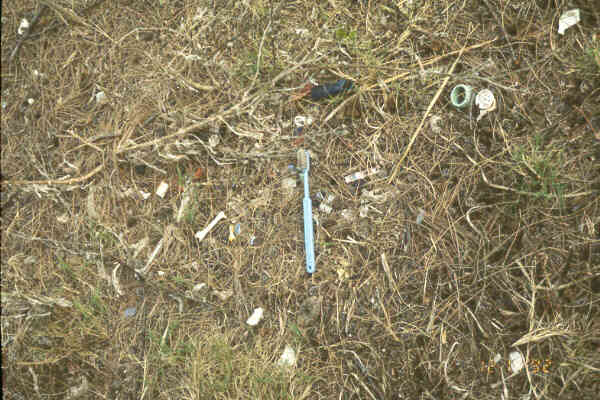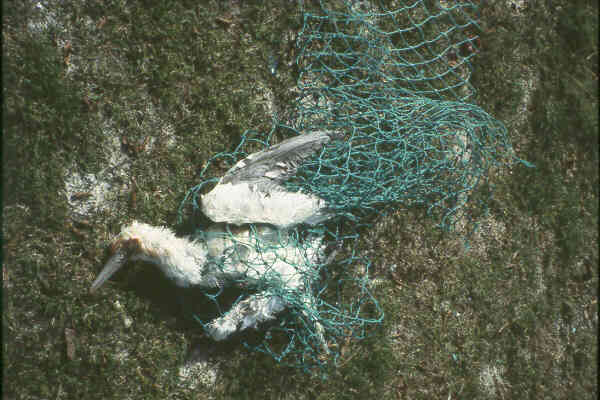
| Somewhere in the world’s oceans, at this very moment, an albatross is gently gliding over the swells looking for food for itself and it’s young. Seeing a small animal floating just below the surface, it swoops to grab it. This behavior might repeat itself several times before the albatross finds sufficient food for both itself and it’s nestling. For eons the albatross has behaved this way to ensure it’s survival. Upon returning to the nest it regurgitates the food recently gathered to feed it’s nestling. After the nestling consumes the food it’s parent has provided, the parent leaves to forage for more food. This is normal behavior for the albatross. |  |
Months later a biologist monitoring the albatross colony finds that some of the chicks have died. Upon examining the remains they find that the stomach cavity contains cigarette lighters, tooth brushes, toy soldiers, caps from sport drinks and soap bottles, and other objects made from plastic. The cause of death can not be readily determined, nor can it be conclusively stated that the plastics killed the chick. However, evidence strongly suggests that the plastics may have contributed to the death of the chick.
Below is a picture of a bird nest. Look closely and you can see the outline of a dead bird. The toothbrush was part of it's stomach contents.
 |
How did the chick ingest plastic items like lighters and toothbrushes you might ask? The Navies of numerous countries, (The United States of America included), dump their trash overboard. Contained in the trash are the lighters, bottle caps and other plastics that wash up on our shores and find their way into bird and animal stomachs. Fishermen aboard fishing vessels often throw their trash overboard. Some countries dump garbage in the world’s oceans just to dispose of it. There are many other ways in which trash is introduced into the ocean, and in fact, there are too many ways to even name.
When trash particles float near or on the surface of the water albatross and other birds and animals think it is food to eat. They often return to their nests and it becomes food for nestlings. This scene is played out many times throughout any given day. But is is not just albatross and animals being impacted by the trash in the oceans. In Hawaii, on the north shore of the Island of Oahu, we discovered approximately seventy-five tons of fish and cargo nets washed up on the beach along with plastic containers, caps, and plastic bits scattered through the sand. Some of the plastic and nets were either intentionally dumped overboard or accidentally lost in legitimate fishing practices. While in the water the nets became phantom fishing death traps for small fish, and the larger fish that attempted to prey on them. Endangered Sea Turtles and Monk Seals also are threatened by the nets due to entanglement. Long strings of nets end up entangled in the coral, where they break the coral heads as large waves toss them around. Birds, like the red footed booby, become entangled and die in the nets.
 |
When they reach the shore plastic containers break up in the surf zone and the small fragments are deposited in the tide pools, leaving the pools void of marine life that is normally found in them.
With the aid of citizens who volunteered, with EnviroWatch Inc., to clean up Kahuku Beach, a portion of the plastic and nets were removed from the area.
Besides volunteering to clean up beaches, here are a few other things you, as concerned citizen, fishermen or seafaring person, can do to help reduce the impacts of plastics on our marine environment:
We have assembled a list of manufactures of nets, traps, ropes and plastic containers to whom you may wish to write a polite letter asking them to help in the education of fishermen and general public in the proper disposal of their products. If there are any companies you would like to add to the list, please let us know at mailto:envirowatch@envirowatch.org